Katie Bouman talks legacy of the black hole imaging project and favorite U-M memories
Caltech Professor Katie Bouman, who earned her BSE in Electrical Engineering from U-M, is most known for her role in the project that successfully reconstructed the first-ever image of a black hole. Released to the public in 2019, the spectacular image, once thought to be an impossible achievement, quickly captivated the world.
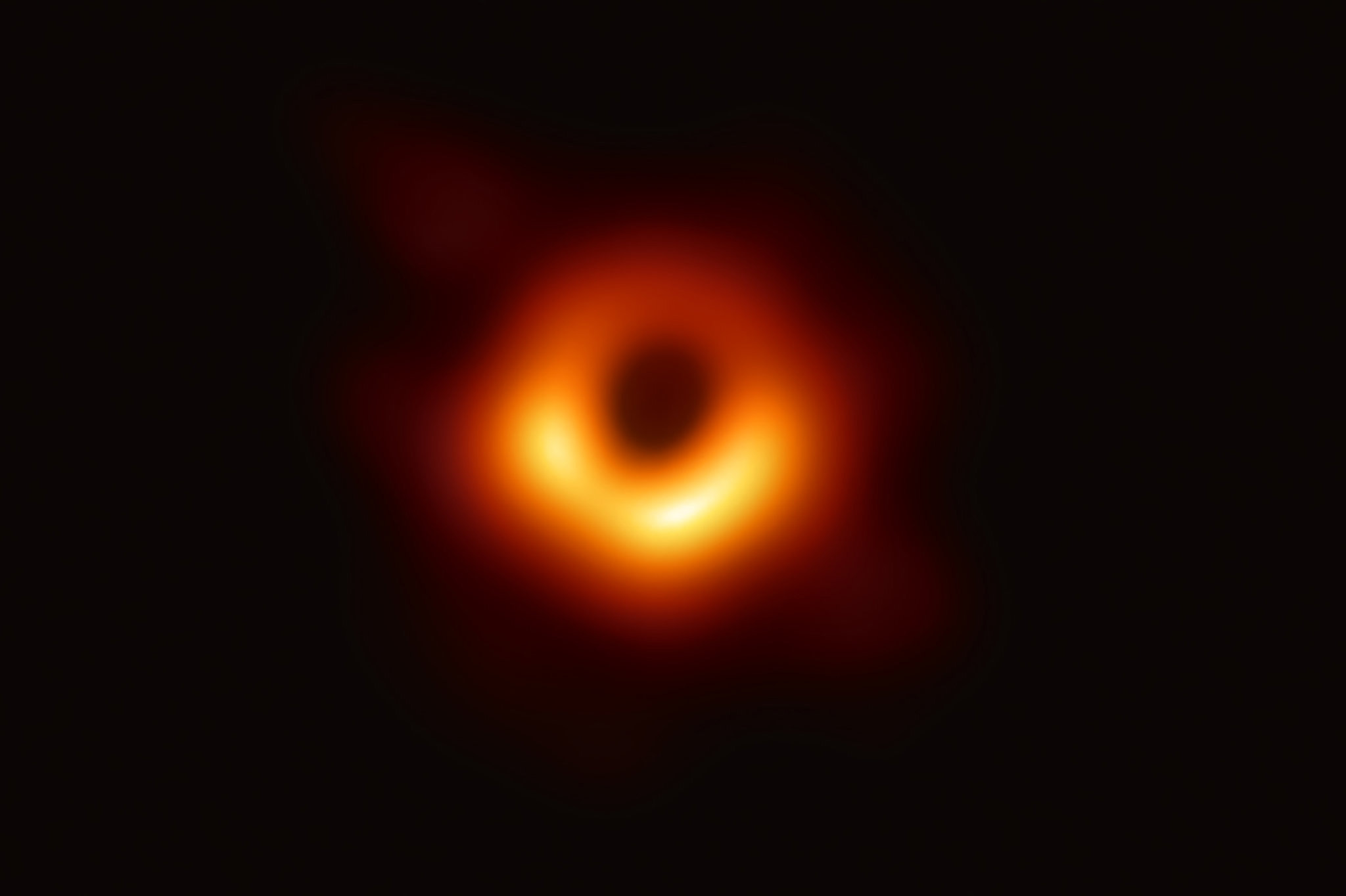
“We had no idea the impact it would have,” Bouman said. “To see it excite people about science and engineering has been amazing. It’s wonderful to see younger students message me about how it inspired them to pursue careers in STEM, and how it’s inspired people in other fields as well.”
While the image reconstruction phase took two years, the entire project has lasted over a decade. It involved an international team of over 200 scientists and a network of eight radio observatories with bases on six mountains across four continents called the Event Horizon Telescope (EHT).
“What’s cooler than black holes?” Bouman said. “It was this idea of, okay, if we come together and think creatively, we can do something that should be impossible. We can see the invisible. I think that’s what captured people and hopefully inspires people to push the boundaries in other areas, too.”
If we come together and think creatively, we can do something that should be impossible.
Prof. Katie Bouman
Bouman helped with many parts of the project, including collecting data from the black hole at one of the telescopes in Mexico, and she led the team that developed the tests and techniques used to verify the black hole image. A photo capturing her reaction at seeing the black hole image reconstructed for the first time went viral, and suddenly Bouman became the unintentional face of the discovery.
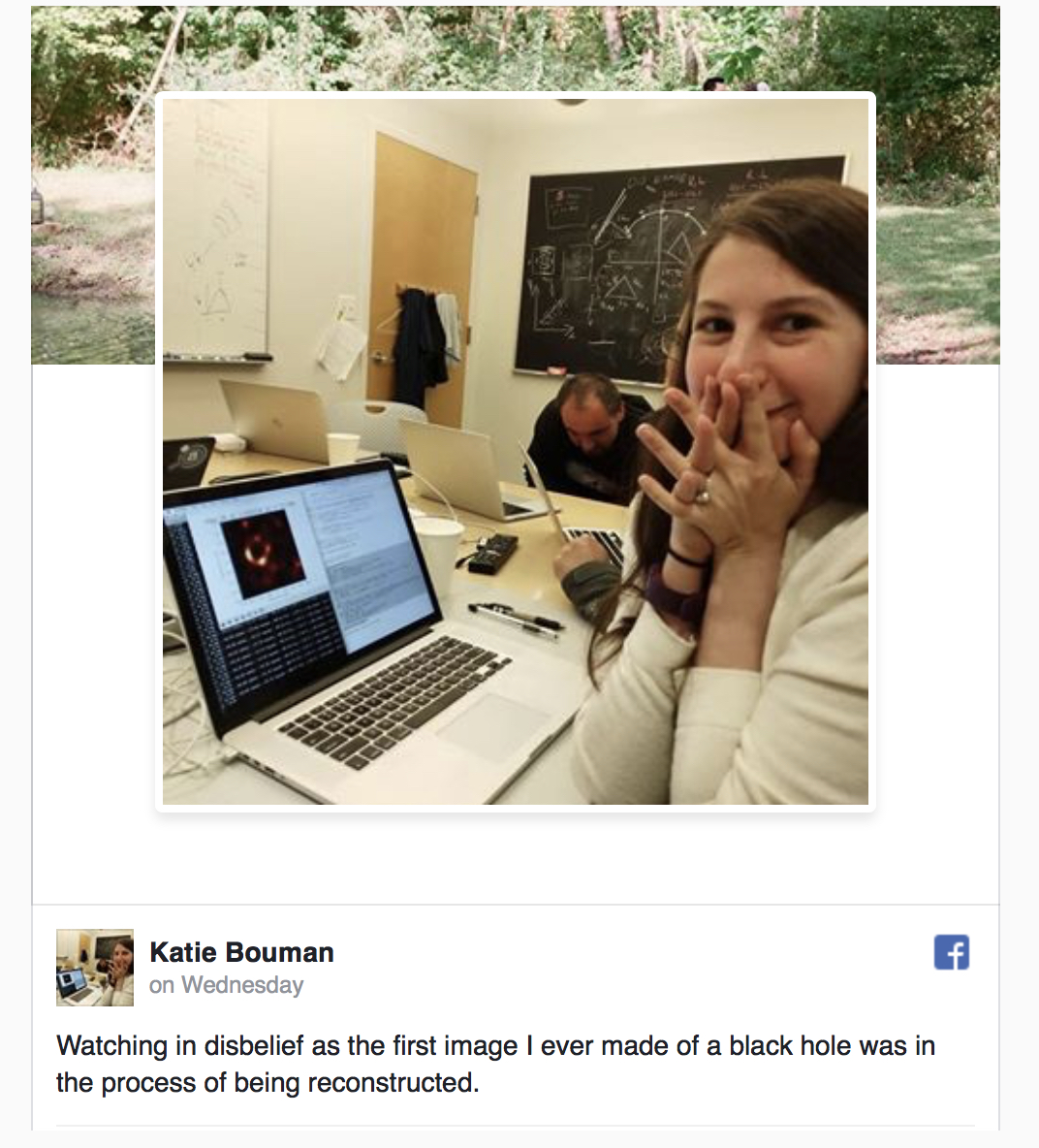
“At first, I didn’t want to be seen as a woman in science, I just wanted to be recognized as a scientist,” Bouman said. “But then I saw how impactful it was for girls and women to have that representation. Highlighting women in science can give people the confidence to push on and improve it for the future, so I’m happy to be a part of that.”
Bouman’s interest in signal and image processing was originally sparked during high school when she assisted a Purdue graduate student on a project that used an image’s noise pattern as a fingerprint to determine which camera took a certain photo.
“It introduced me to this idea of there being hidden information everywhere,” Bouman said.
Bouman knew she wanted to study engineering, but she wasn’t sure which school she wanted to attend – that is, until she visited U-M’s campus back in 2007.
“Everything just clicked immediately, and I thought, okay, I love it here,” Bouman said.
Bouman lived in East Quad her first two years where she enrolled in the Michigan Research Community (now the Michigan Research and Discovery Scholars) and spent time eagerly awaiting the next chicken broccoli bake day in the East Quad cafeteria. Her experiences in the Michigan Research Community inspired her to major in Electrical Engineering and continue to work on projects related to image processing and reconstruction.
In addition to EECS 216, some of the classes that inspired Bouman the most were EECS 498 (a Machine Learning course taught by Professor Emeritus Jasprit Singh), a probability class taught by Prof. Clayton Scott, and EECS 452 – a Major Design Experience (MDE) course taught by Prof. Al Hero. Scott and Hero both say that she was one of their brightest students. Scott was so impressed with her that he offered to be her graduate advisor within six weeks of knowing her. Hero says the MDE final project she led was the most impressive student project he’s ever seen.
“Her idea was to use a cheap camera to take a picture of a musical score – that had coffee stains or distortions or was crumpled up – and then the computer would automatically play the music on the score,” Hero says. “It was very ambitious, but also really cool.”
Like with the black hole, Bouman and her team had to figure out how to restore an image well enough for a computer to be able to recognize it.
“She developed a sophisticated and elegant method that basically estimated the distortion pattern that came out of these very poor lenses, and then used that estimate to correct the lens,” Hero says. “She was just outstanding.”
“I thought that was so cool,” Bouman said. “We worked so hard on it, and there were so many late nights, but in the end, it worked perfectly. It was so great.”
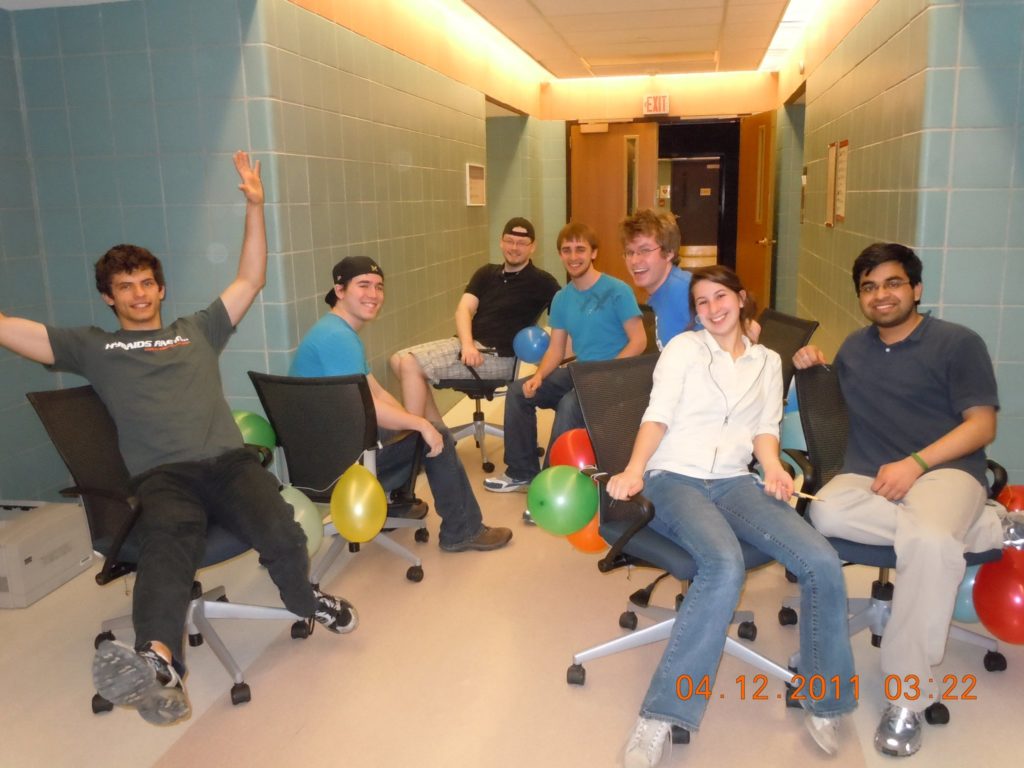
One of Bouman’s favorite experiences at U-M was being involved in Eta Kappa Nu (HKN, the ECE honor society), for which she also served as social chair. She was also the original owner of the couch in the HKN office in the Bullpen.
“It was great to be part of that community. I really clicked with them,” Bouman said. “We’d do homework together, but then we’d also go play laser tag or whirly ball – and, you know, I’ve tried to explain this to people, and no one else knows what whirly ball is.”
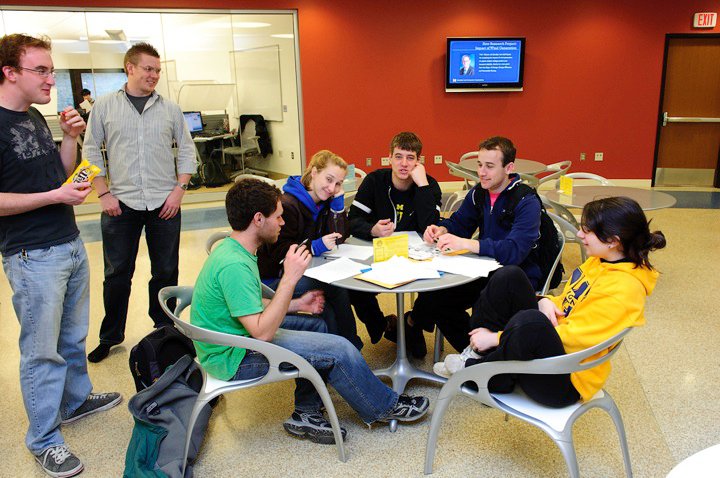
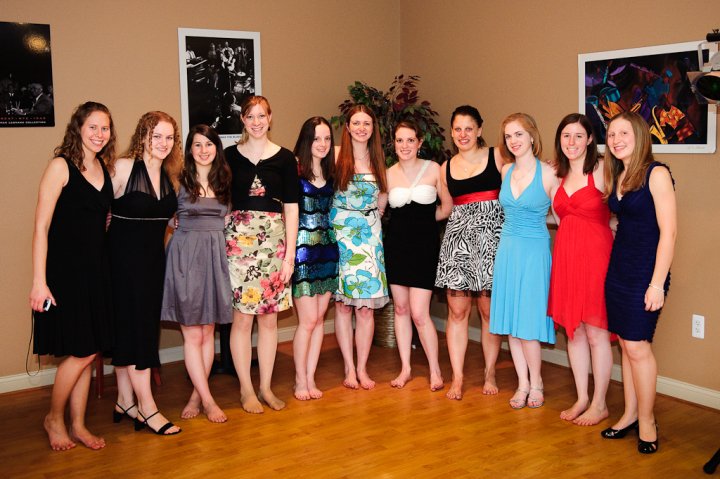
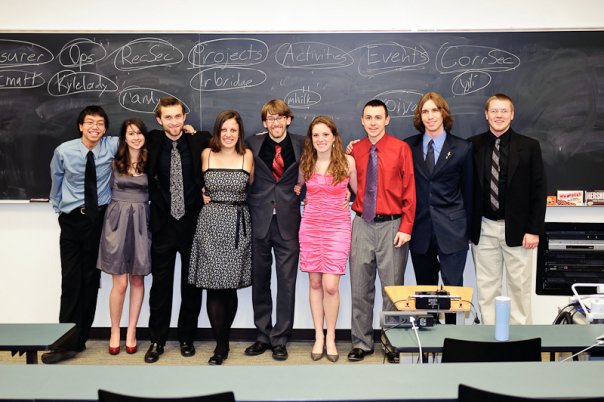
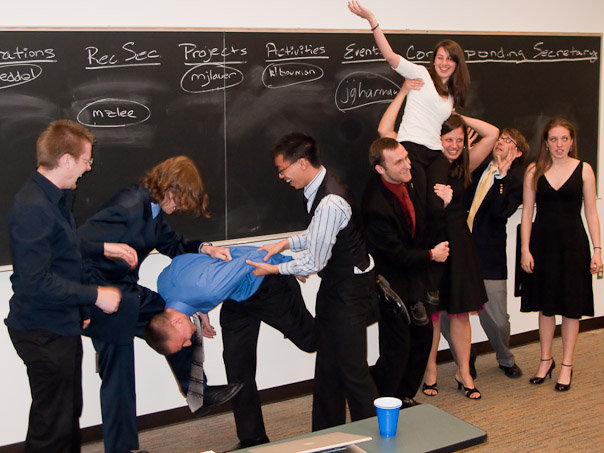
One of Bouman’s responsibilities in HKN was helping run the currently defunct but hopefully soon-to-be revived dB Café in EECS, which is where she obtained her main source of sustenance: Domino’s pizza.
“I got my vegetables through the green pepper pizza and my protein from the chicken pizza,” Bouman joked. “I just lived off of Domino’s.”
Some of Bouman’s additional campus staples were Pizza House, BTB Burrito, and the Blue Leprechaun. She also enjoyed attending Michigan football games.

“I was always the ones my friends would throw up into the air whenever we’d score,” she said.
Above all, what Bouman remembers most about U-M was the supportive community. In addition to mentors and professors, Bouman said she learned a lot from her fellow students.
“I remember sitting with other students, some in different programs, and we would teach each other concepts and things,” she said. “I learned so much by just interacting with people, and I had a lot of great experiences. There was such a supportive network here, and it gave me the tools that really helped me later on.”
Today, Bouman is an Assistant Professor in the Computing and Mathematical Sciences, Electrical Engineering, and Astronomy Departments at the California Institute of Technology. Before joining Caltech, she was a postdoctoral fellow in the Harvard-Smithsonian Center for Astrophysics. She received her PhD in the Computer Science and Artificial Intelligence Laboratory (CSAIL) at MIT in EECS.
Bouman most recently returned to campus on December 13th to deliver the talk “Beyond the First Portrait of a Black Hole.” She spoke about how advances in machine learning are helping to achieve more efficient uncertainty quantification of reconstructed images, in addition to developing techniques that allow us to extract the evolving structure of our own Milky Way’s black hole over the course of a night. Demonstrating the interdisciplinary nature of her research, the talk was hosted by the Michigan Institute for Data Science and co-sponsored by the ECE and CSE divisions, as well as the LSA Astronomy department.

More:
Katie Bouman wows U-M community with insider’s look at the black hole imaging project
 MENU
MENU 
